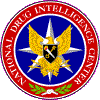ARCHIVED
![]() To Contents
To Next Page To Publications Page
To
Home Page
To Contents
To Next Page To Publications Page
To
Home Page

|
National Drug Intelligence Center Pennsylvania Drug Threat Assessment Update October 2003 HeroinTreatment statistics, emergency department (ED) mentions, and mortality data reflect the magnitude of the heroin threat to Pennsylvania and two of its largest cities, Philadelphia and Pittsburgh. According to the Pennsylvania Bureau of Drug and Alcohol Programs, the number of heroin-related treatment admissions to publicly funded facilities statewide increased 7.3 percent from 13,261 in state fiscal year (SFY) 2001 to 14,229 in SFY2002. (SFY is July 1 through June 30.) Drug Abuse Warning Network (DAWN) ED data indicate that the number of heroin-related mentions in the Philadelphia metropolitan area fluctuated but increased overall from 4,661 in 2000 to 5,362 in 2001 to 4,918 in 2002. The rate of heroin ED mentions per 100,000 population in the Philadelphia metropolitan area (109) was significantly higher than the rate nationwide (36) in 2002. DAWN mortality data indicate that heroin/morphine was mentioned in 412 of the 874 drug deaths in the Philadelphia metropolitan area in 2001. Heroin/morphine was the only drug present in 34 of those deaths. Allegheny County (Pittsburgh) Coroner data indicate that heroin alone was involved in 56 (26.6%) of the 210 accidental drug overdose deaths in 2002. Heroin in combination with other drugs was a factor in 118 (56.1%) of those deaths. According to Arrestee Drug Abuse Monitoring Program (ADAM) data, 13 percent of adult male arrestees in Philadelphia tested positive for opiates in 2001, the most recent data available. The 2001 Youth Risk Behavior Survey (YRBS) indicates that 2.6 percent of high school students surveyed in Philadelphia reported having abused heroin in their lifetime, compared to 3.1 percent nationwide.
Heroin, primarily South American heroin, is readily available throughout Pennsylvania. According to the Drug Enforcement Administration (DEA) Philadelphia Division, all of the heroin purchased in Pennsylvania in 2002 under the auspices of the Domestic Monitor Program (a heroin purchase program designed to identify the purity, price, and source of origin of retail-level heroin available in drug markets in 23 major U.S. metropolitan areas) and analyzed by DEA's Special Testing and Research Laboratory was South American heroin. Some state and local law enforcement agencies, however, report that Southeast Asian, Southwest Asian, and Mexican black tar and brown powdered heroin are available, though to a lesser extent. According to the National Drug Intelligence Center (NDIC) National Drug Threat Survey (NDTS) 2002, 72 of the 99 law enforcement respondents in Pennsylvania reported the availability of heroin as medium or high. According to Federal-wide Drug Seizure System (FDSS) data, federal law enforcement officials in Pennsylvania seized 18.2 kilograms of heroin in 2002, a substantial increase from the 8.8 kilograms seized in 2001. U.S. Sentencing Commission (USSC) data indicate that the percentage of drug-related federal sentences in the state involving heroin (9.2%) was higher than the national percentage (7.2%) in fiscal year (FY) 2001. Statewide, heroin sold for $80,000 to $110,000 per kilogram, $2,000 to $6,500 per ounce, and $10 to $40 per bag in the second quarter of FY2003, according to the DEA Philadelphia Division. The heroin analyzed by the DEA during that period had purity levels ranging from as low as 40 percent to as high as 95 percent.
Most of the South American heroin available in Pennsylvania is transported into the state by Colombian and Dominican drug trafficking organizations (DTOs) and African American, Dominican, Mexican, and Puerto Rican criminal groups. Caucasian criminal groups; African American, Caucasian, and Hispanic local independent dealers; and street gangs also transport South American heroin into the state, although to a lesser extent. Most of the South American heroin available in Pennsylvania is purchased from sources of supply in New York City and, to a lesser extent, in Atlanta, Baltimore, Chicago, New Jersey, and Florida and transported into the state via private vehicles (frequently equipped with hidden compartments) and rental vehicles. Heroin also is transported into Pennsylvania, albeit to a lesser extent, via commercial vehicles; couriers aboard buses, trains, and commercial aircraft; maritime vessels; and package delivery services. Colombian and Dominican DTOs and criminal groups and African American, Puerto Rican, and Mexican criminal groups are the principal wholesale-level heroin distributors in Pennsylvania. These DTOs and criminal groups primarily are based and conduct their illicit activities in the state's larger cities, such as Philadelphia. Caucasian criminal groups; African American, Caucasian, and Hispanic local independent dealers; street gangs such as Latin Kings; and outlaw motorcycle gangs (OMGs) such as Warlocks also distribute heroin at the wholesale level in the state, although to a lesser extent.
Various ethnic criminal groups, local independent dealers and abusers, street gangs and, to a lesser extent, OMGs distribute heroin at the retail level in Pennsylvania. African American, Caucasian, and Hispanic criminal groups and local independent dealers; street gangs such as Latin Kings; and, to a lesser extent, OMGs such as Breed and Warlocks are the principal retail-level heroin distributors in Pennsylvania. Retail-level heroin distribution in the state typically occurs at open-air drug markets, from private residences, hotel rooms, and bars, as well as in public parking areas at malls and shopping centers. Most heroin sold at the retail level in Pennsylvania is packaged in small glassine bags stamped with a logo. Heroin distribution and abuse often are associated with property crime and occasionally are associated with violent crime in Pennsylvania. In 2002 Ohio Township Police officials reported that the number of property crimes such as shoplifting and the theft of items (compact discs, stereos) from vehicles increased significantly because of the high level of heroin abuse in the area. One home improvement store in Ohio Township changed its liberal exchange policy because heroin abusers were stealing merchandise from the store and then returning the stolen items for cash. According to law enforcement officials, heroin distributors occasionally commit violent crimes such as assault and robbery to protect product, money, and turf.
|
End of page.